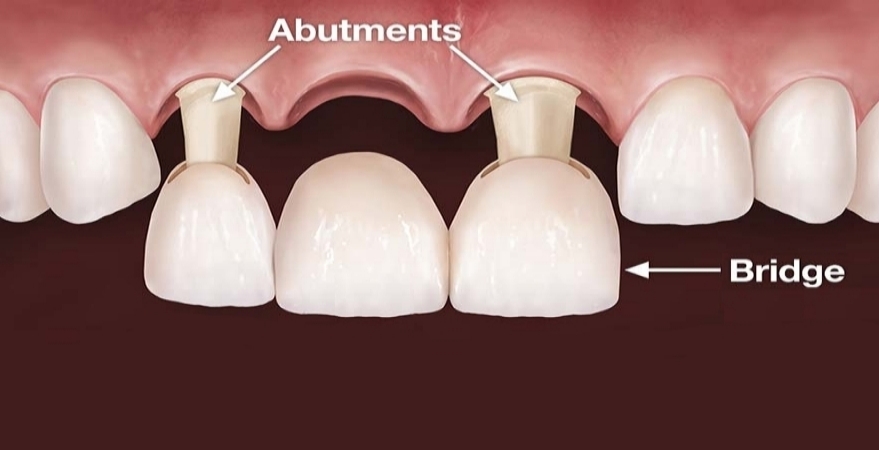A great way to replace missing teeth!
The Problem
- A missing tooth or teeth
- Potential bite and jaw joint problems from teeth shifting to fill the space
- The “sunken face” look associated with missing teeth
- Desire to improve chewing ability
- Desire for a more permanent solution than dentures

The Solution
Bridges help maintain the shape of your face, as well as alleviating the stress in your bite by replacing missing teeth.
Sometimes called a fixed partial denture, a bridge replaces missing teeth with artificial teeth, looks great, and literally bridges the gap where one or more teeth may have been. The restoration can be made from gold, alloys, porcelain (matching the current shade and shape of your natural teeth) or a combination of these materials and is bonded onto surrounding teeth for support.
Advantages
Unlike dentures, a fixed bridge is never removed. It is stable in the mouth and works very similar to natural teeth. By filling the gap and stopping the movement of other teeth, a fixed bridge is an excellent investment, providing better chewing ability, heading off jaw joint problems and saving money that would otherwise be spent on future dental treatment.
Disadvantages
Fixed bridges are excellent restorations but do have some disadvantages. Since they rely on natural teeth for support, their placement requires manipulation of the teeth adjacent to your missing tooth. This means that otherwise healthy tooth structure will need to be removed so space can be created to support the bridge. This does not mean a bridge is a poor choice, it is just something to consider when deciding what treatment may be best for you. Bridges are highly durable, but they will eventually need to be re-cemented or replaced due to normal wear.
Alternatives
The best alternative is a dental implant.
